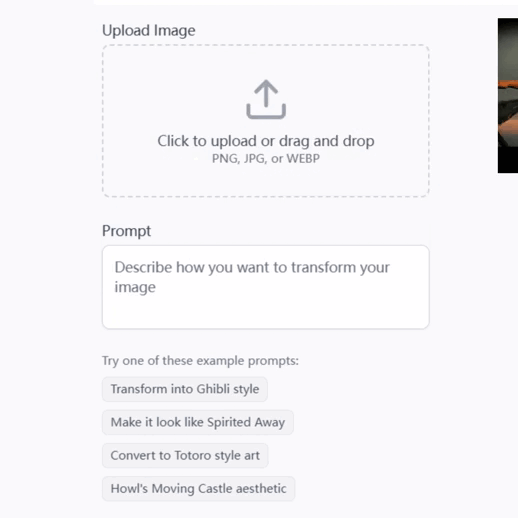
TOC Creating DFAs - DFA Design & Analysis Tool

Welcome! Let's design some DFAs together.
Simplifying Automata with AI
Design a DFA transition table for...
Create a DFA that accepts strings containing...
Outline the transition table for a DFA with...
Construct a DFA with states that...
Get Embed Code
Overview of TOC Creating DFAs
The purpose of TOC Creating DFAs is to assist in the design, analysis, and understanding of Deterministic Finite Automata (DFAs) within the context of Theory of Computation (TOC). DFAs are a type of automaton used in computer science to model a system of inputs and outputs, where each input causes the system to transition between states according to a set of rules. The creation of DFAs involves defining a finite set of states, including an initial state, one or more accepting states, transitions based on input symbols, and often a dead state to handle unexpected inputs. For example, a DFA can be designed to recognize patterns within strings, such as identifying if a binary number is divisible by a certain number, or if a string adheres to a specific language syntax. These models are foundational in designing algorithms, compilers, and understanding formal languages. Powered by ChatGPT-4o。

Main Functions of TOC Creating DFAs
Defining DFA States
Example
Creating a DFA to recognize binary strings that represent even numbers.
Scenario
This involves establishing an initial state, a set of transitions where inputs '0' and '1' lead to different states, and an accepting state that signifies an even number has been recognized.
Creating Transition Tables
Example
Designing a DFA for validating patterns in email addresses.
Scenario
The transition table would include states for recognizing prefixes, the '@' symbol, domain names, and a '.com' or similar suffix, with transitions defined for valid characters in each part of an email address.
Identifying Start and Accepting States
Example
Developing a DFA to detect palindromes over a binary alphabet.
Scenario
This DFA would start in an initial state and include transitions that reflect the palindrome structure, with accepting states that correspond to the completion of a palindrome detection.
Designing Dead States
Example
Creating a DFA to parse programming language syntax, where a dead state captures invalid symbol sequences.
Scenario
This function is crucial for compiler design, ensuring that the DFA transitions to a dead state upon encountering syntax errors, effectively rejecting invalid programs.
Ideal Users of TOC Creating DFAs Services
Computer Science Students
Students studying automata theory, formal languages, compilers, or similar subjects would benefit from using TOC Creating DFAs to visualize and understand the abstract concepts of DFAs and their applications in computer science.
Software Developers and Engineers
Professionals developing parsers, compilers, or working on projects requiring pattern recognition can use TOC Creating DFAs to design efficient state machines for their software systems.
Academic Researchers
Researchers focusing on theoretical computer science, automata theory, or algorithm design could utilize TOC Creating DFAs for modeling and testing theoretical constructs or for educational purposes in teaching complex concepts.

Guidelines for Using TOC Creating DFAs
1
Start by visiting yeschat.ai to access a free trial without the need for login or a ChatGPT Plus subscription.
2
Familiarize yourself with the basics of Deterministic Finite Automata (DFA) including states, transitions, and accepting conditions to effectively utilize the tool.
3
Use the interface to define your DFA's states, start state, accepting states, and the transition rules based on your specific requirements.
4
Input your DFA specifications into the tool to automatically generate a transition table, visual representations, and test strings against your DFA.
5
Review and adjust your DFA based on the tool's feedback and testing outcomes to refine and perfect your automata for your intended application.
Try other advanced and practical GPTs
Creatino
Empowering Your Infrastructure with AI

Canada Newcomers Chat Guide
Navigate Canada with AI-powered Guidance

Canada Immigration advisor
AI-powered Immigration Guidance

Dream Pursuit USA
Empowering Your American Dream with AI

Your Canadian Dream
Empowering your journey to Canada

Am I in a Cult?
Discover Group Influence, Powered by AI

Tenant Helper
Empower Your Tenancy with AI

Landlord-Tenant Mediator
AI-Powered Guidance for Landlord-Tenant Matters

Good Tenants Rental Assistant Pro
Streamlining rental applications with AI

Tenant Concerns Communication System
Empowering tenants through AI

Landlord-Tenant Mediator
Empowering Resolution in Rental Relationships

Company Tenant Rights Advisor
Empowering Corporate Tenants with AI-driven Legal Insight

Frequently Asked Questions about TOC Creating DFAs
What is TOC Creating DFAs designed for?
TOC Creating DFAs is designed to assist users in designing, testing, and understanding Deterministic Finite Automata (DFAs) for various computational and theoretical purposes, making it easier to apply these concepts in academic, research, and practical scenarios.
Can I use TOC Creating DFAs for educational purposes?
Yes, TOC Creating DFAs is an excellent resource for students and educators alike, offering a hands-on approach to learning and teaching the principles of automata theory and its applications in computer science.
How can TOC Creating DFAs help in DFA optimization?
The tool provides features for testing and refining DFAs, allowing users to identify and correct inefficiencies or errors in their automata designs, leading to more optimized and effective DFA solutions.
Is there a limit to the complexity of DFAs I can create with this tool?
While TOC Creating DFAs is designed to handle a wide range of DFA complexities, extremely intricate or large-scale automata may require careful planning and iterative testing to effectively manage within the tool's interface.
How does TOC Creating DFAs assist in DFA visualization?
The tool offers visualization features that allow users to see their DFA's structure and transitions graphically, making it easier to understand and communicate the automata's functionality and design decisions.






